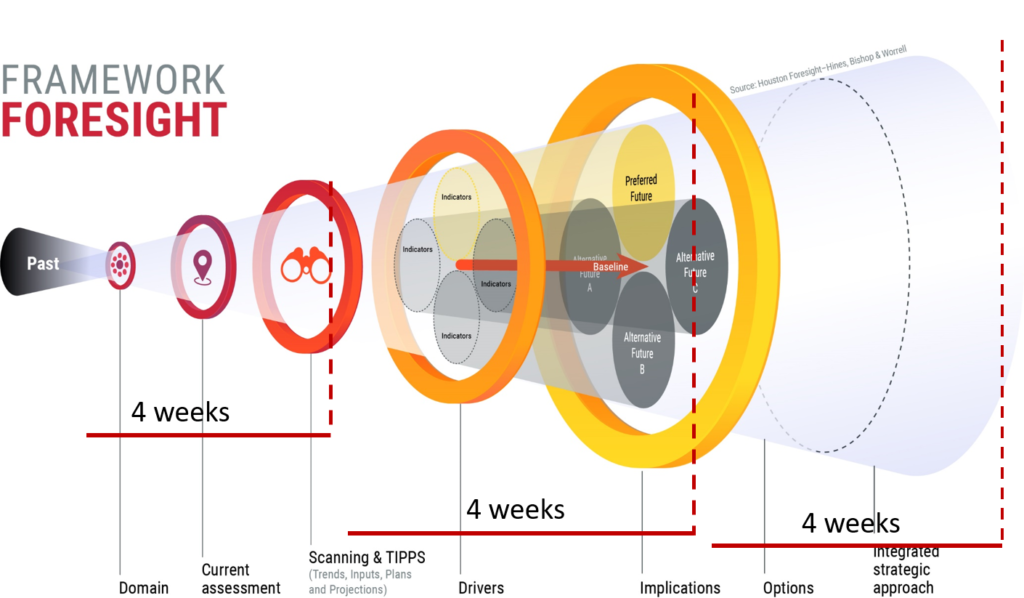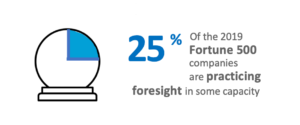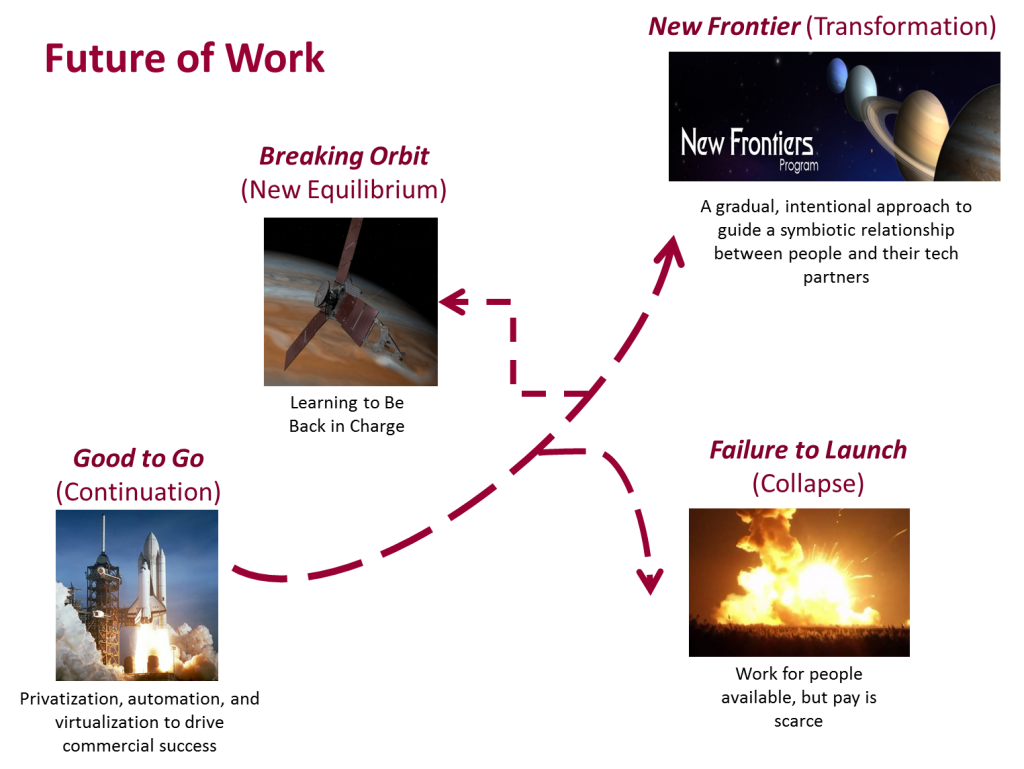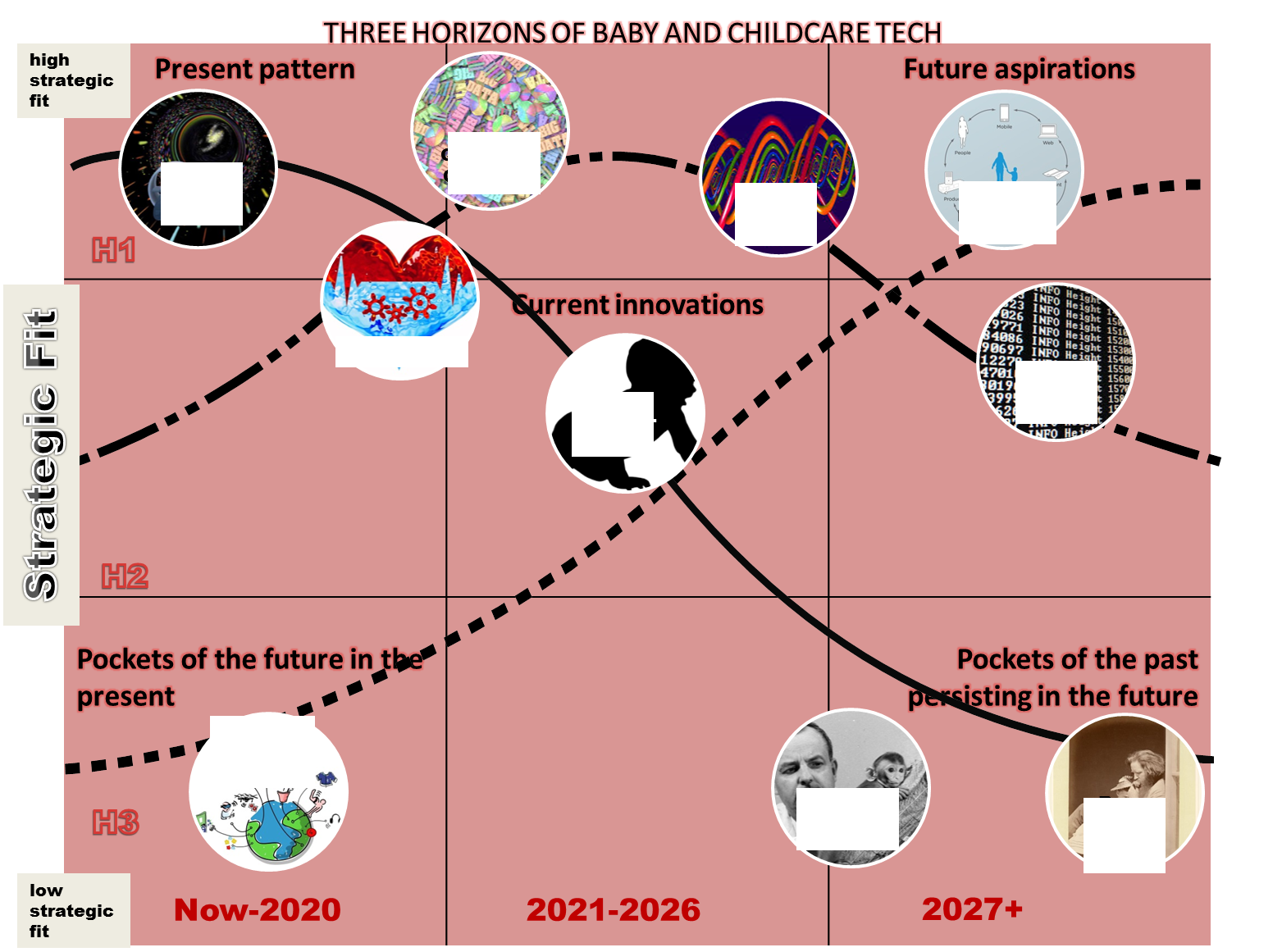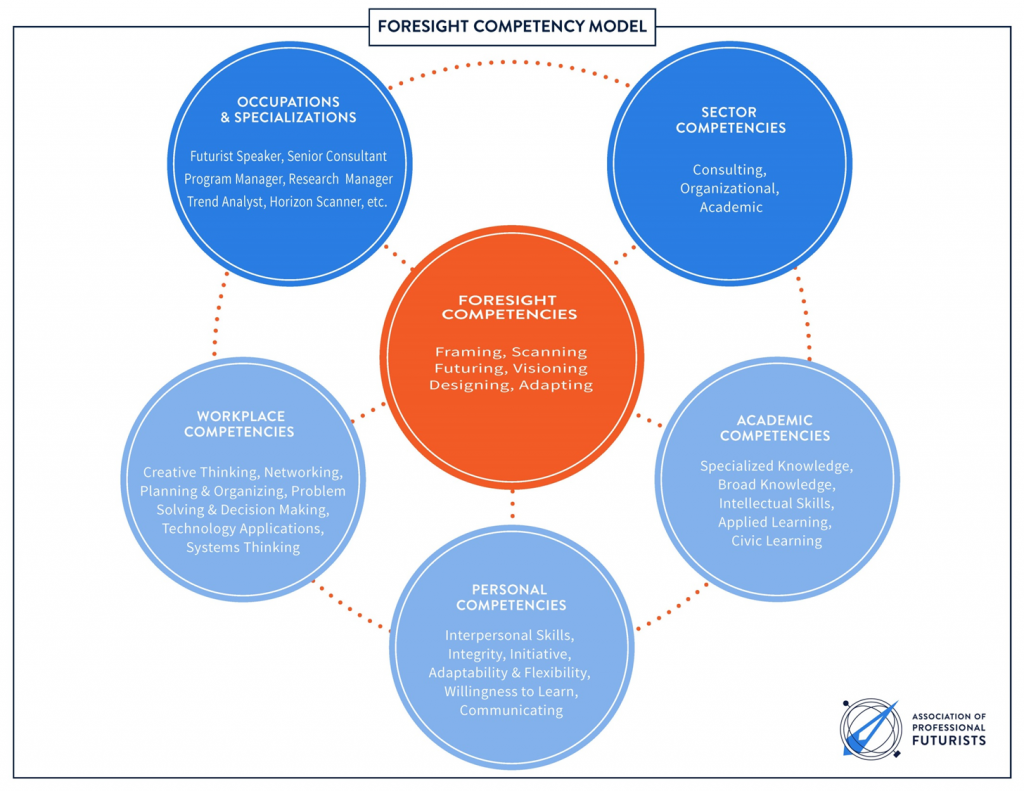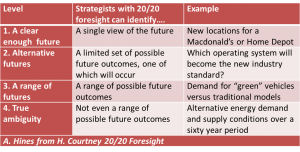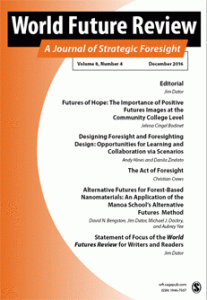Can foresight help strategic planning? You betcha. We designed Framework Foresight to “feed” strategy, innovation, policy, design, etc. The first half of the process maps the future, in order to help the client influence the future in the second half. The beauty is that the scenario landscape map (and all the supporting scanning and research) informs and helps the team to develop much more robust and resilient strategies.
My sense is a strategic plan most often has strategic priorities that are very solid and sensible. Where specifically does foresight help:
- Looks beyond the baseline. Most strategic plans address the Horizon 1 baseline future. There is nothing wrong with addressing the baseline, but a foresight perspective extends that view to look for significant changes or disruptions. A baseline-focused strategic plan assumes a continuity future with no shifts/surprises, but as we like to joke, that is the least likely future.
- Develops more resilient strategies. Another significant value that foresight brings is to consider how strategies might fare in different scenarios. For example, s strategy might work extremely well in one scenario but poorly in others. Sometimes a team will develop a sense of direction about where the future is heading, and develop a strategy primarily aimed at that, but with contingencies just in case. And sometimes a team will develop a strategy that avoids a particular negative
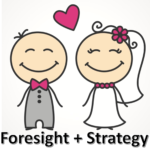 scenario. The scenario landscape provides a backdrop to have a much more informed strategic conversation.
scenario. The scenario landscape provides a backdrop to have a much more informed strategic conversation.
I worked on an APF Professionalization Task Force a few years ago that developed foresight ecosystem map that identified the close relatives of foresight. Strategic planning is most certainly one of them! – Andy Hines

